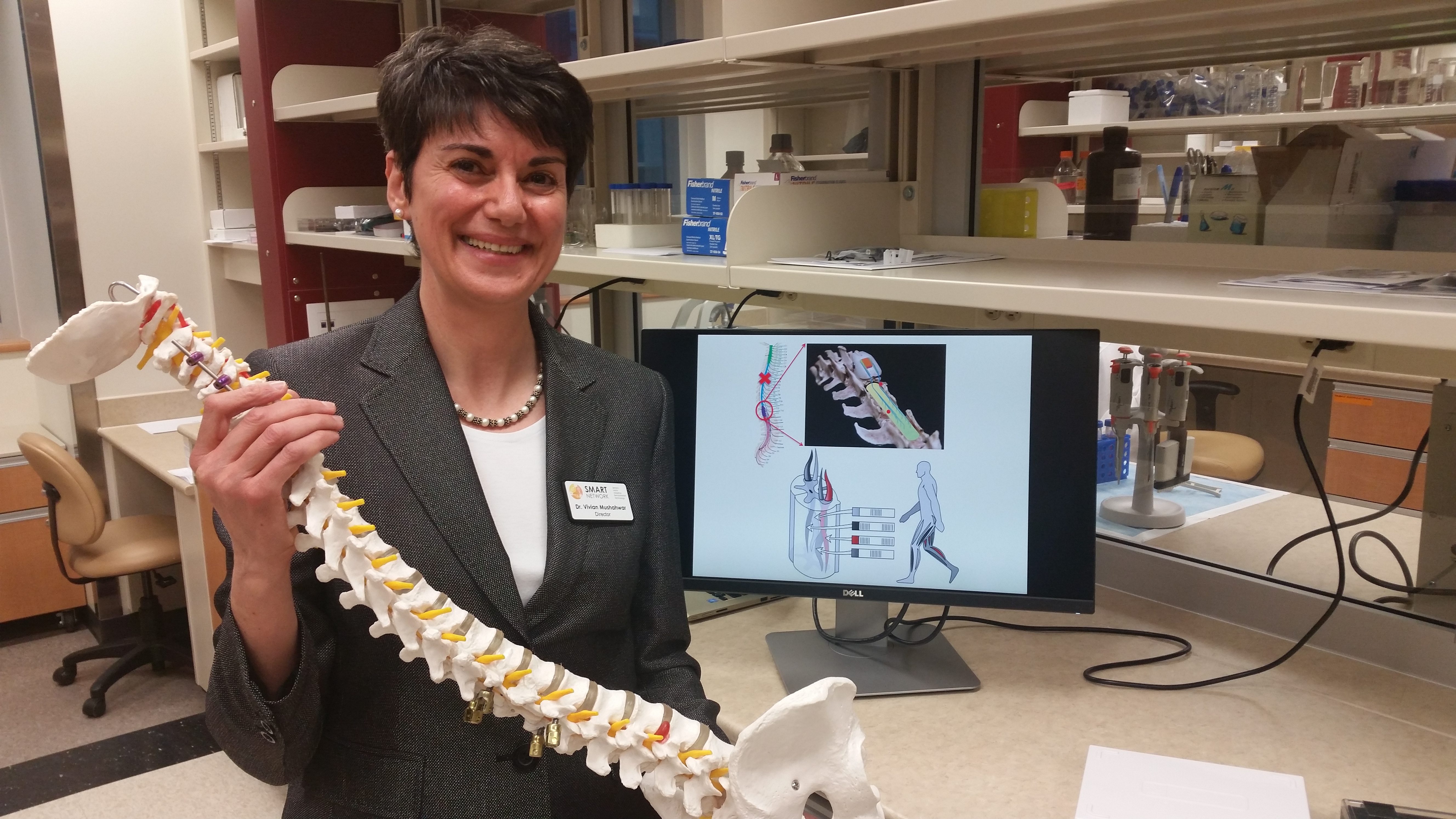
Vivian Mushahwar is working with the Glenrose Rehabilitation Hospital to guide a program supporting patients with spinal cord and neurological injuries.
A world-class researcher and bioengineer has joined the Glenrose Rehabilitation Hospital to help guide a program that support patients with spinal cord and neurological injuries.
Vivian Mushahwar has been appointed a special advisor in Functional Electrical Stimulation (FES) Technologies. FES is a technique that uses electrical current to cause a muscle to contract, causing the body part to move. Following a spinal cord or neurological injury, some of the electrical signals don't work as well as they should, and FES enables muscles that have been paralyzed or partially paralyzed to move again. Mushahwar has been researching FES for the past two decades.
"Given Dr. Mushahwar's significant international profile, expertise and accomplishments in developing best healthcare clinical teaching practices and educational curriculums using vanguard technologies, this is an ideal match for the Glenrose," says Isabel Henderson, senior operating officer at the hospital. "This advisory role brings the opportunity to build capacity in the area of FES technologies in rehabilitation across different programs."
The advisory role will work closely with the Glenrose to examine current FES devices, and to determine if they can be used more efficiently and if the patient user group can be expanded.
Mushahwar, a professor in the Division of Physical Medicine and Rehabilitation and director of the Sensory Motor Adaptive Rehabilitation Technology (SMART) Network at the University of Alberta, has previously collaborated with the Glenrose to test FES technologies developed through her research, such as Smart-e-Pants, which are proven to reduce the risk of patients with reduced mobility developing pressure ulcers. The undergarments send a painless electrical current to the buttocks for 10 seconds every 10 minutes, causing the patient to shift their body positioning and relieve pressure.
"The Glenrose does a fabulous job with rehabilitation," says Mushahwar, whose research is based at the University of Alberta. "We are working together to find ways to apply FES in a meaningful, measurable fashion that will make a difference in patients' lives."
Research has shown FES improves endurance, circulation, spasticity and muscle tone in patients who still have some motor and/or sensory function.
"Working with GRH, we can look into ways where FES can make rehabilitation even better. For example, would an FES-assisted cycling device improve walking by increasing the patients' regularity and exposure to rehab, while reducing the manual effort therapists exert in walking-related rehabilitation?," says Mushahwar.
"If this is the case, we may have a more effective therapy for improving walking than what's available, and also be more efficient in health delivery."
Evan Mudryk had a stroke seven years ago that impaired the right side of his body. As part of his rehabilitation, the 20-year-old university student uses FES cycling twice a week to stimulate weakened muscles, causing them to contract, helping with muscle re-education and strength.
"I'm improving bit by bit," says Mudryk. "I was very surprised the first time I could do a full rotation on the machine. My arm is stronger, and I'm getting better. It's been four years and counting and I can see the difference most definitely."
Mushahwar is currently working on an electronic sock that prevents deep vein thrombosis, and the Glenrose will test the new technology later this year.